Are you a travel blogger who needs SEO help?
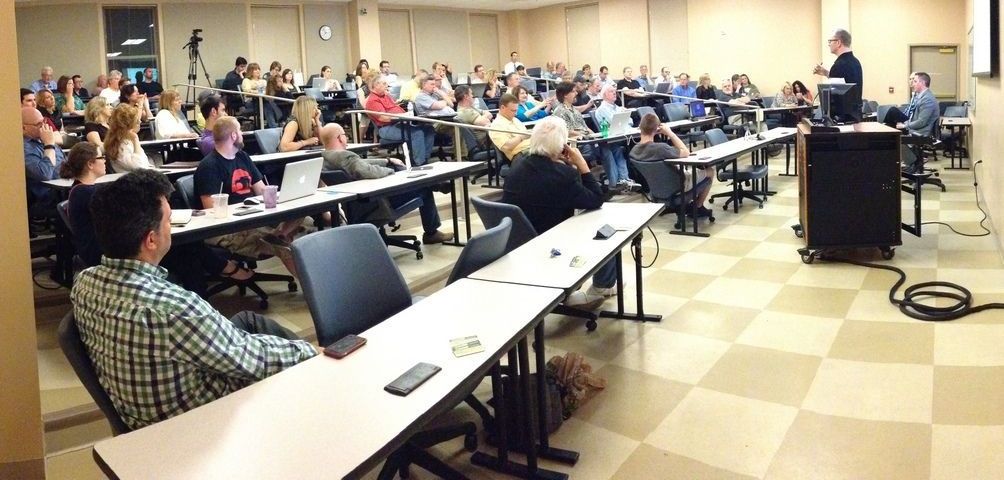
Want me to personally help your travel blog’s optimization, for free? Jump to the bottom of this SEO guide to contact me.
Just want some travel blog SEO tips from someone who knows both worlds?
Help yourself to the info below. It’s more of a beginner’s guide to SEO but I’ve tried to include some suggestions that will help any travel blog.
What is SEO?
Most people will tell you that search engine optimization is doing things with your website to rank well on Google. And if you’re just getting started with SEO, that’s a perfectly reasonable definition.
However, I’ve always broken down Search Engine Optimization into two parts.
First, what is a “Search Engine?”
And second, what is “Optimization?”
A search engine is anywhere that anybody looks for something. And optimization is getting the most out of something.
So just ranking well on Google is a perfectly fine target for a beginner at SEO. But there’s alot more opportunity in the realm of SEO besides that.
Just ranking well on Google ignores the fact that people search other places besides Google. And do you really want to just rank well on Google?
- Don’t you want people to click on your listings and visit your website?
- Don’t you want people to actually do something at your website like read content, comment, share, provide their email, click an ad or fill out a form?
Yep, I think all of that is part of “Search Engine Optmization.”
But let’s get back to the basics of SEO for travel bloggers, which is the purpose of this beginner friendly guide.
What’s a Keyword?
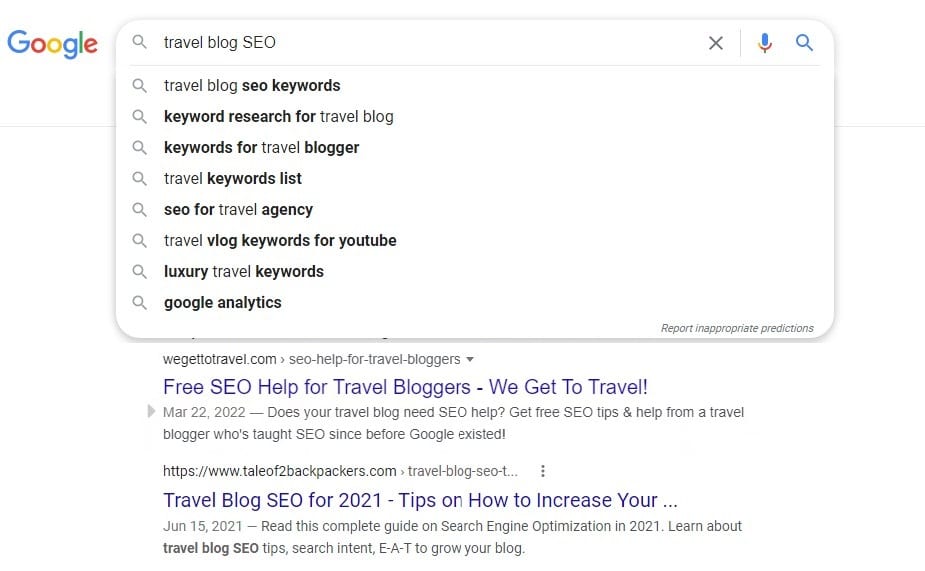
Those words that you type into Google are known as keywords. Google calls them queries.
Why would keywords matter to a travel blog?
Keyword Research
While the term may sound pretty technical, Keyword Research is simply discovering what people actually search for on Google. Google gives us tools to see what queries have been used in the past.
For a travel blog that wants readers, it’s valuable to know that every month, ~110 people Google the SEO friendly travel term “Best Food at Nashville Airport.”
On the other hand, there were ZERO searches on Google last month for “Road To Hana Cow Gate.”
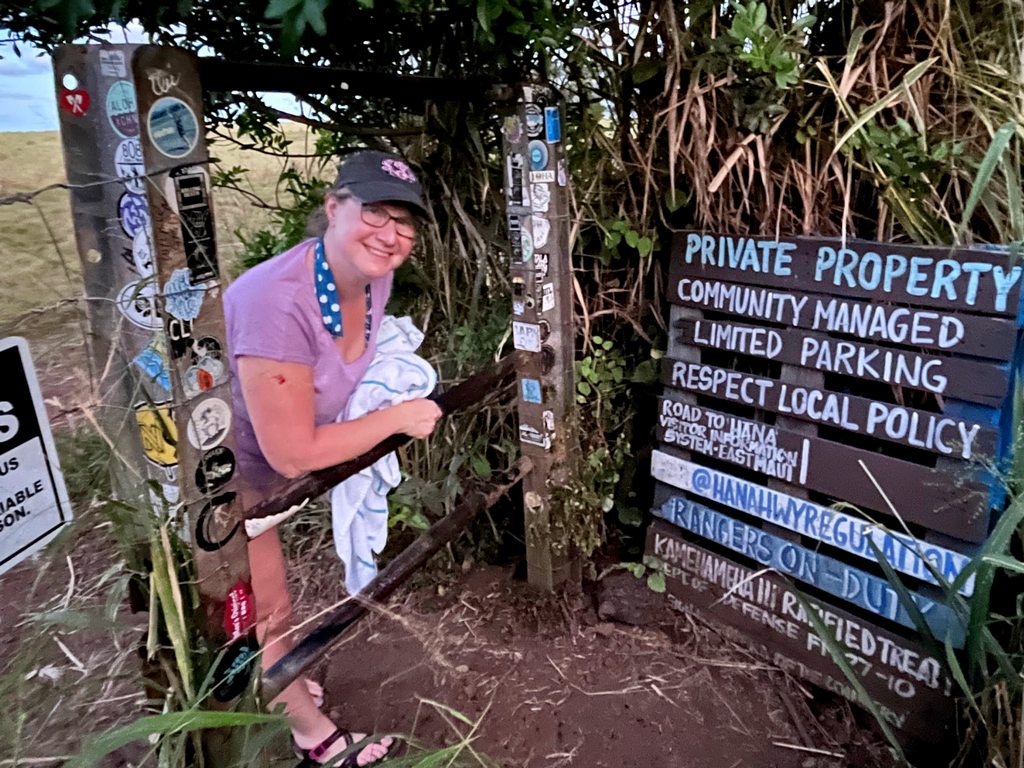
But I wrote about that cow gate anyway. Not every picture and paragraph on a travel blog has to be SEO friendly.
However, if you align some/alot/most of your content with what people search for, you’ll get more visitors from Google.
How does Google work?
When you go to Google and search for something, Google doesn’t really trust you.
Seriously, Google thinks that they know what you really want. They don’t necessarily trust those words and terms that you just typed into Google.
Google looks at your keywords and then Google says “I wonder what they really want?” or more technically “What is this searcher’s intent?”
Once Google decides what you really want, Google then compares that with their copy of the web.
That’s an important point: Google keeps their own copy of the web.
Google’s Index
Google does not go out across the Internet in real time every single time that somebody searches for something. That would be way too slow so they keep their own copy of the web. Google calls their copy of the web the Google Index.
That means that if you just created some new content on your website, Google might not have it in their index yet. Therefore, your new content won’t show up in the Google results if it’s not in the Google Index yet.
Is Your Site in the Google Index?
On a desktop, goto google.com and type in “site:” and then your domain name like this:
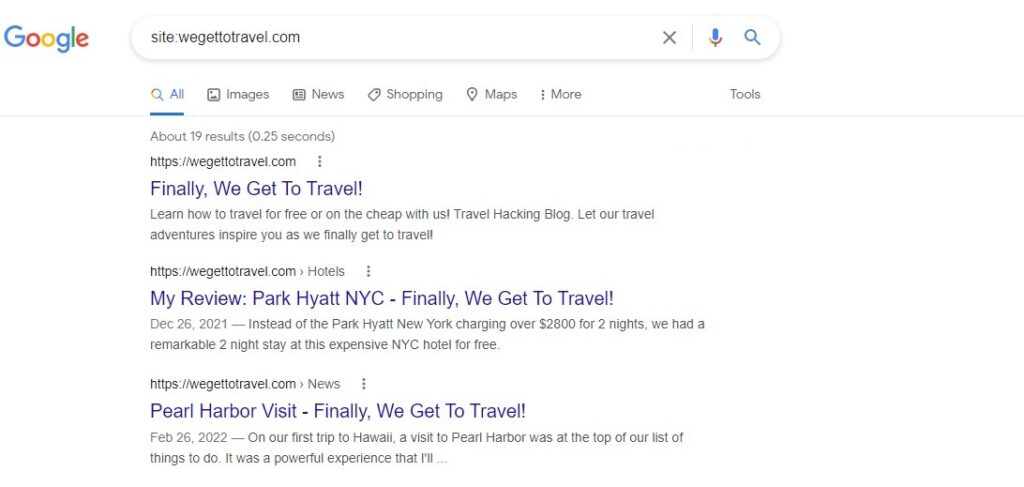
That will show you all the pages on your domain that are currently in the Google Index. fyi, this doesn’t work on a mobile device.
Google Algorithms
So how does Google decide what’s a good match for what you searched for?
Wrap your head around this one question & your brain will mimic the Google algorithms:
What’s this page about?
Basic SEO is really as simple as having a page (or blog post) that has a clear and obvious answer to the question:
What’s this page about?
And just to be clear, I use the terms page and post interchangeably here. Most travel bloggers know that pages and posts are a little different. To Google, they’re really the same thing.
Fun fact (for travel blog SEO nerds): Google refers to all pages, posts and even pdfs and spreadsheets as documents. Google essentially applies the same algorithms to all documents but, in the real world, it’s easier for pages and posts to rank well vs a pdf or Word document. This tip might come in handy for more advanced travel blog SEO.
If you want to create a page that ranks for a certain travel blog keyword, topic, or idea, make sure that Google understands what your page is about.
Is Your Site Ready for SEO?
There are 2 free tools from Google that you need installed before getting started with SEO.
Google Analytics
It’s super important to be able to track what’s going on with traffic to your travel blog.
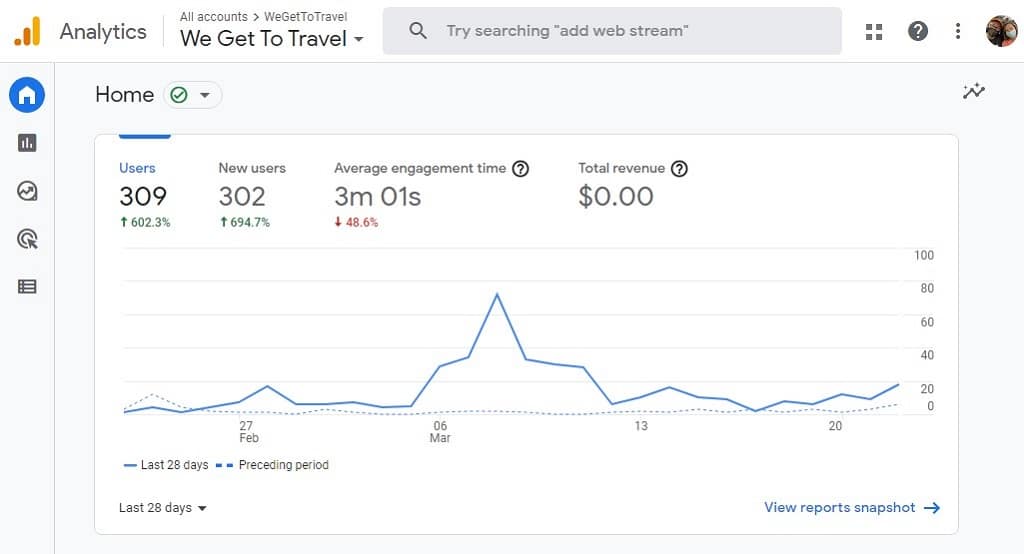
So first things first, add Google Analytics (GA) to your website. GA will tell you how many visits your travel blog gets, where those visitors come from and what those visitors do when they get to your website.
Google Search Console
Another free tool, Google Search Console (GSC) will tell you what happened at Google BEFORE a visitor came to your travel blog.

You’ll see that pages and posts were ranking for what keywords on Google. You’ll see what pages have been indexed by Google. And Google will also let you know if they see any problems with your travel blog.
How to Travel Blog with Good SEO
So how do you get Google to understand what your page is about?
When you create a page or a blog post, start with a plan. After 2 decades of SEO, I think your plan should start with:
What’s this page going to be about?
That’s the first step in my 4 part process when I write a well optimized page (or post) for my travel blog.
4 Steps to a Well Optimized Blog Post
- Find Topic & Focus Keyword
- Create Outline of Blog Post
- Create the Blog Post
- Review, Improve & Publish
Here’s the details of how I use this 4 step process on this travel blog.
Find Topic & Focus Keyword for your Blog Post
If you don’t already have a topic in mind, you need to come up with that 1st.
This is the short answer to “What’s this page about?“
Once you’ve got an idea for the topic of the post, use a keyword research tool like Keyword Generator to determine a focus keyword phrase. This should be 2-6 words that is very well associated with the topic.
Let’s say I want to use “Pearl Harbor Visit” as my focus keyword phrase.
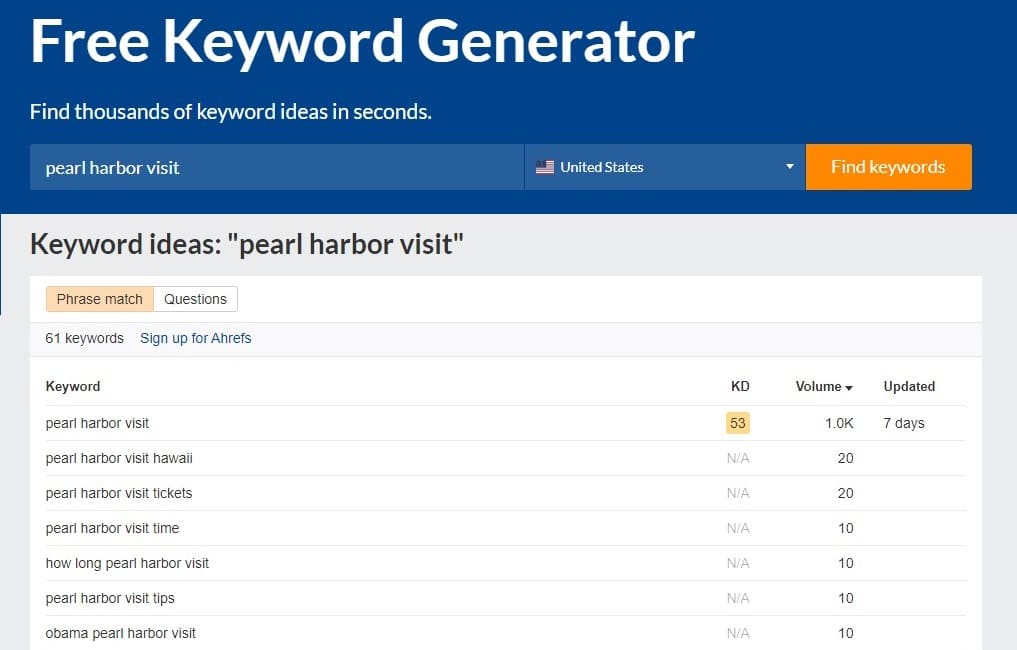
I’ll also ID related phrases like:
- pearl harbor memorial
- pearl harbor attack
- pearl harbor tickets
- best time to visit pearl harbor
- how long to visit pearl harbor
- is it worth it to visit pearl harbor
- USS Arizona Memorial
As you’re doing keyword research, take a look at what websites/pages/posts currently rank well. This can give you insight into what you should create.
Next step in writing a well optimized travel blog post is planning the structure of the content.
Create Outline of Your Travel Blog Post
Before you actually start writing your blog post, have a plan for what you need to cover and what you’ll include.
Most, if not all, of what you include in your page/post should reinforce the answer to:
What’s this page about?
Start with your title.
Come up with a title that will resonate with the searcher who you’re trying to reach. I decided that I want to help someone who is thinking about a visit to Pearl Harbor. To do this, my title can be as simple as: “My Pearl Harbor Visit”
I’ve used my primary keyword and I’ve personalized it a little by saying that it’s “My Pearl Harbor Visit.” This title should really be of interest to someone who’s thinking about visiting Pearl Harbor.
Next, come up with a meta description that summarizes the blog post in 1-2 sentences. This will help guide you as you’re creating the content.
btw, you can always go back and revise as you get deeper into the process in case you decide to go a different direction.
Here’s my meta description:
On our first trip to Hawaii, a visit to Pearl Harbor was at the top of our list of things to do. It was a powerful experience that I’ll never forget.
Using your meta description as a guide, list out the sections of your post. What will you cover?
For me, here’s the outline of my blog post to help people who are considering a visit to Pearl Harbor:
- Pearl Harbor Tickets
- Best Day & Time to Visit
- How Much Time to Visit?
- Is Visiting Pearl Harbor Worth It?
See how I’ve used my keyword research to come up with SEO friendly travel terms and topics?
Create the Blog Post
You’ve now got a plan for writing your travel blog post. It’s usually best to start with some introduction, cover the items that you have in your outline and then close with some type of wrap up.
If you did your outline really well, you may be able to use each line in the outline as a section heading and simply add 1 or more paragraphs to flesh out each section. If you need to tweak the outline to come up with more well-written section headings, that’s fine.
btw, there’s a nice tool in WordPress that shows the outline of your blog post.
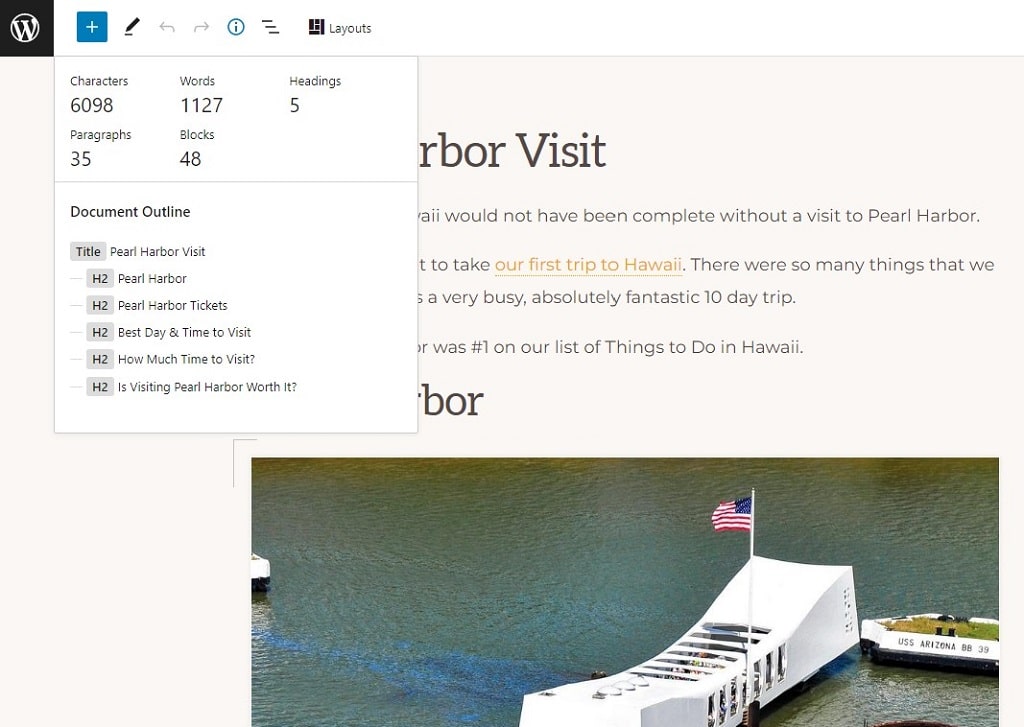
That’s an easy way to see if your headings align with “What’s this page about?”
Use Your Keywords, but Sparingly
Try to use the focus keyword and some of your related kw phrases naturally in the section headings and in the content.
Don’t go overboard with this.
Don’t feel like your travel blog post has to say that your travel blog post is the best travel blog post for people who want to read a travel blog post like your travel blog post.
That sounds stupid, right? There’s even a term for this: keyword stuffing. Don’t do it.
Use images or other non-text assets. Remember to add file names and alt text that both:
- accurately describe the image, and
- include one or more of your keywords.
Review, Improve & Publish
It’s time to review what you’ve created. Read your blog post or, better yet, get someone else to read it. How did you do?
Ask your test reader to answer this question:
What’s this page about?
If their answer is what you expected, you’re well on your way to SEO success with this blog post.
Now, let’s take it to the next level.
Is It High Quality Content?
Did you create something that’s quality content? Would it really help the searcher that you have in mind? Is it better &/or different than what’s already online? If the answer is yes, you’re headed in the right direction.
How is your SEO?
How did you do for SEO? Did you include your focus keyword phrase a minimum of once?
Were you able to include some of your related keywords?
Did you stuff too many keywords?
When you read it, if it sounds like you used it too many times… then you are waaaay past the point of proper usage.
What Could Be Better?
How could your blog post be better? Is it too short, too long, too boring…? Do the images you used make for a better user experience or are they just some random images?
Think about how your blog post can better and then make those changes. Repeat this process until you’re confident that you have created a high quality and well optimized blog post.
Publish that Blog Post!
Your last step is to publish your blog post and make a final review. Is there anything that should be improved?
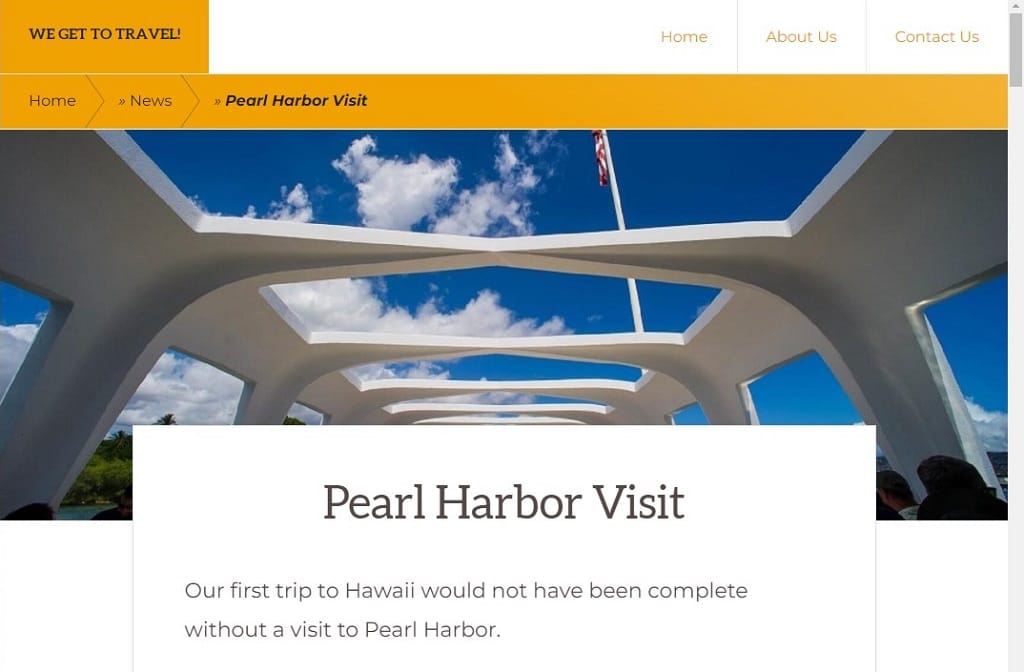
Congratulations! Your Optimized Blog Post is Live!
Writing your 1st SEO friendly blog post isn’t rocket science. Alot of the best practices you follow for creating a good blog post are the same best practices for good writing.
Focus first on helping your reader and the SEO will usually come very naturally.
Travel Blog FAQ
Use WordPress. After 20+ years of building websites, I’ve tried all the blog platforms and WordPress is the best to start a travel blog.
First, come up with the general topic. Second, use a tool like Keyword Generator to find keywords with high volume that align well with your topic.
Use appropriate keywords in your blog’s title, url, heading, subheadings, body content and in anchor links pointing to the blog post. If you use keywords correctly, they should be the obvious answer to the question: “What’s this page about?”
Was this guide to travel blog SEO enough to help you?
If not, keep reading.
Get FREE SEO Help for Your Travel Blog
I’m new to travel blogging but I’ve been focused on SEO since before there was a Google.
I’ve taught Digital Marketing as an Adjunct Professor at 3 different colleges. Back before the world changed, I ran a large SEO Meetup group that met every month.
Teaching bloggers how to get more people to read their content is fun for me.
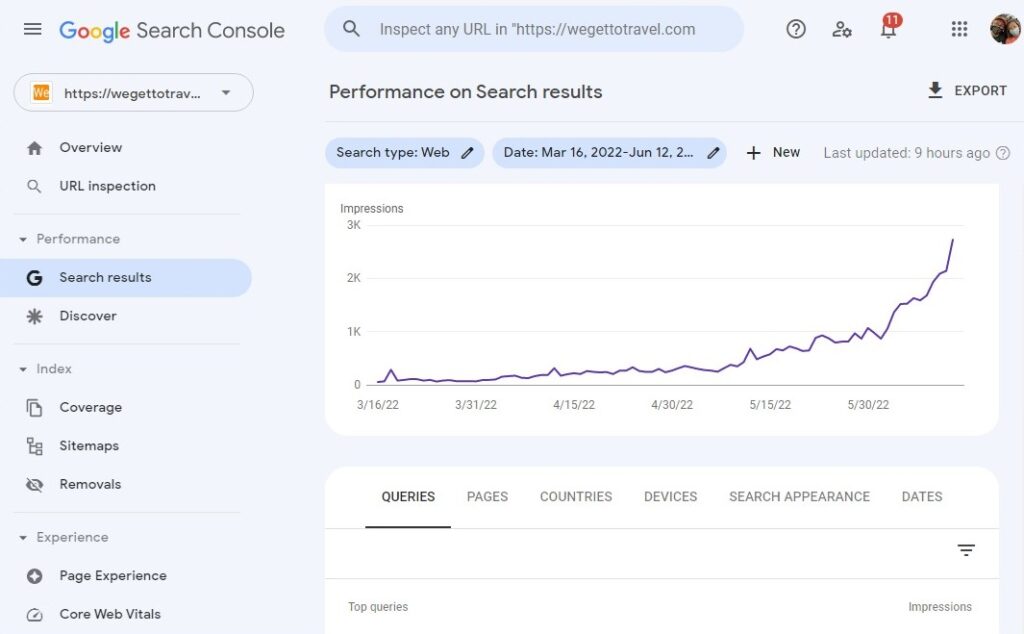
Why Would I Help You with SEO?
Like I said, I like to teach & share.
The corporate travel blogs have a team of SEO experts and that makes it hard for independent travel bloggers to get found.
While I appreciate the big travel blogs, I’ve learned so much from independent travel bloggers that I’d like to give back to the community. So I’d be happy to help you optimize your travel blog.
What SEO Help Can I Provide?
In the last 25 years, I’ve provided SEO recommendations for about 2000 websites.
I’ll take a look at your website and give you some specific suggestions to improve your travel blog’s SEO.
I’m happy to give you a 30-60 minute SEO consultation for free.
Want to thank me?
I’d appreciate a little cross promotion. A mention to your audience on social media or on your blog would be great!
If you’d like me to help your travel blog’s SEO, just leave a comment with your info and I’ll try to help. Or hit me up on Instagram or Facebook if you’d rather not leave your details here.

Leave a Reply